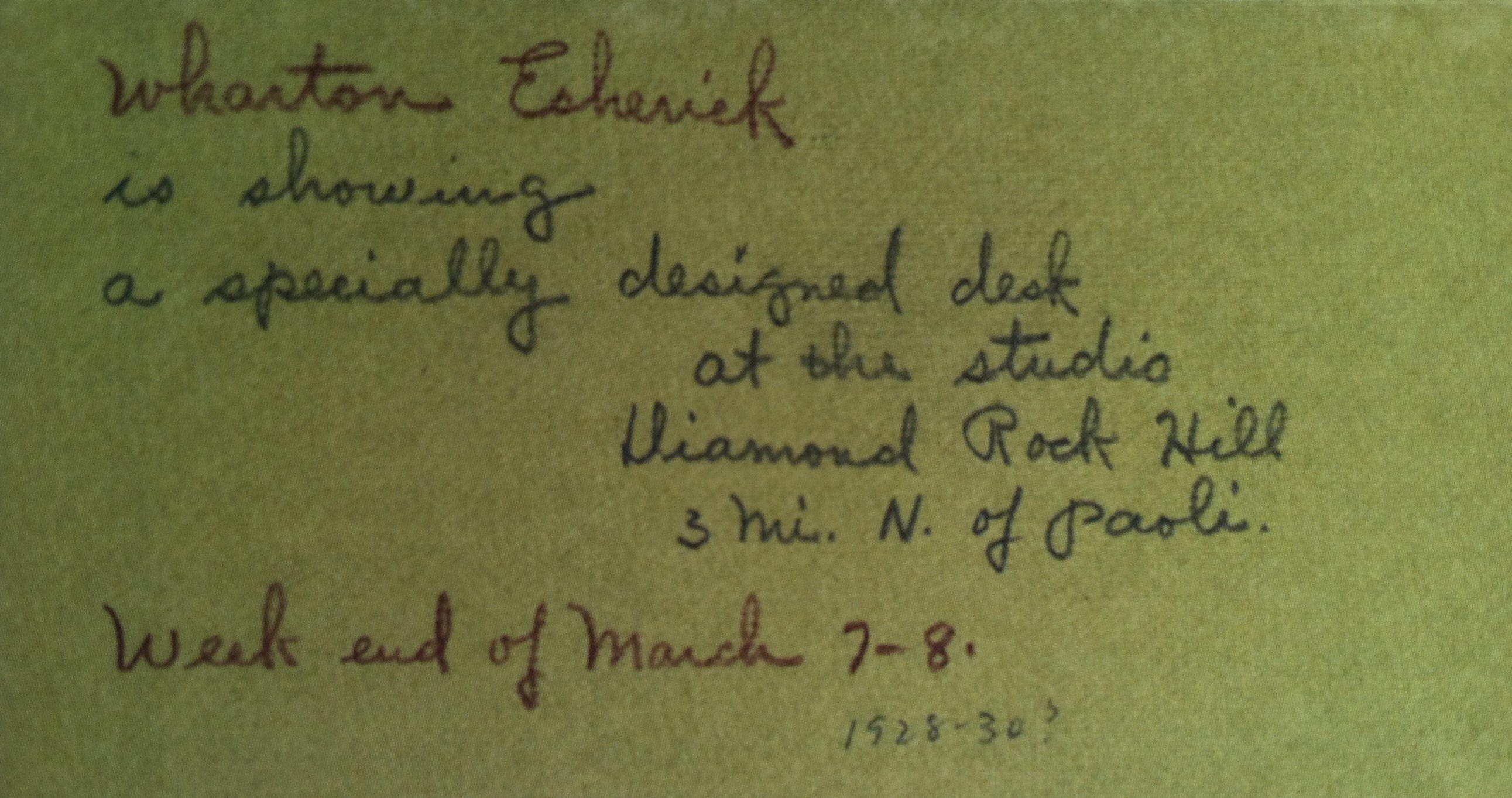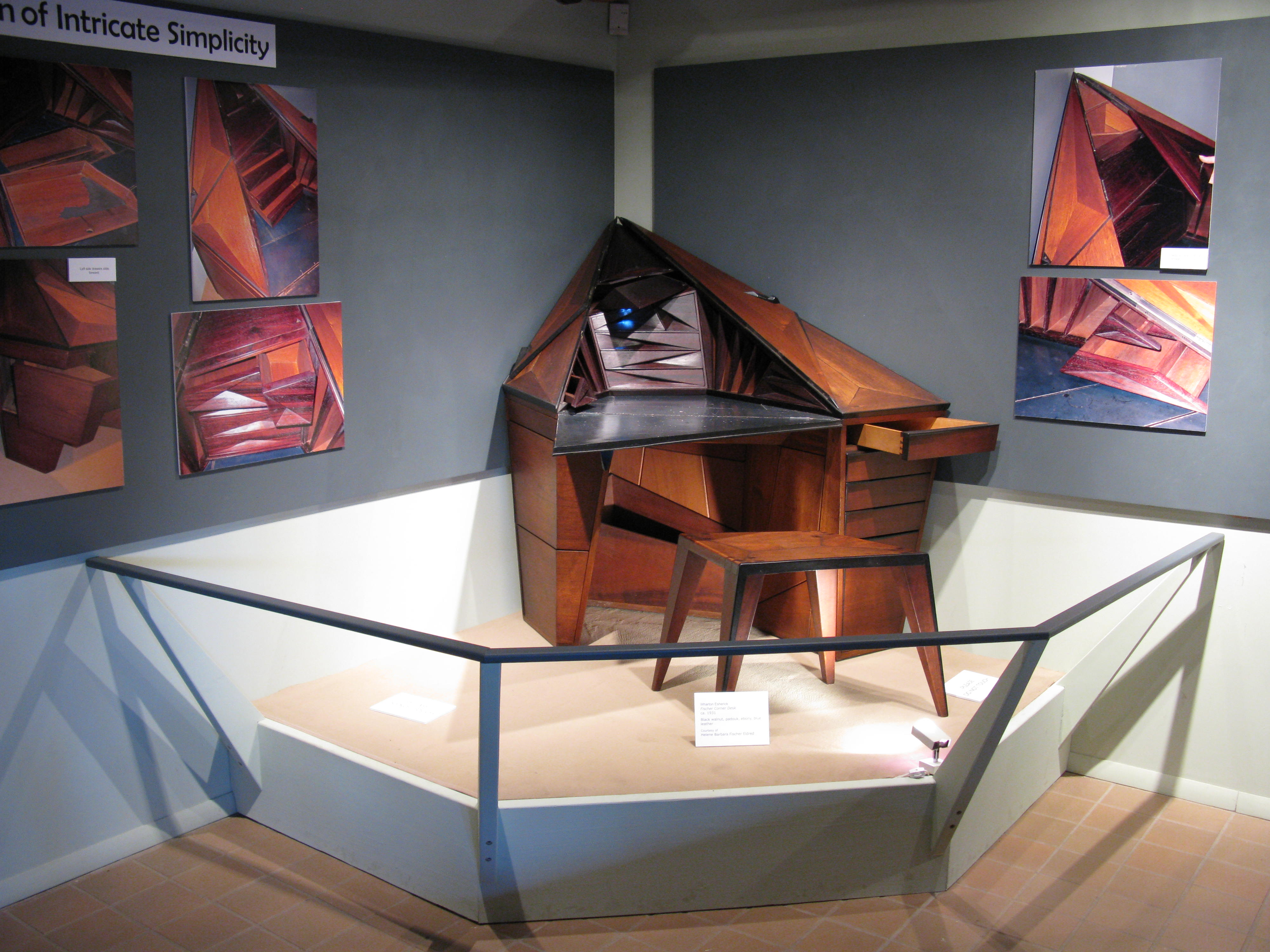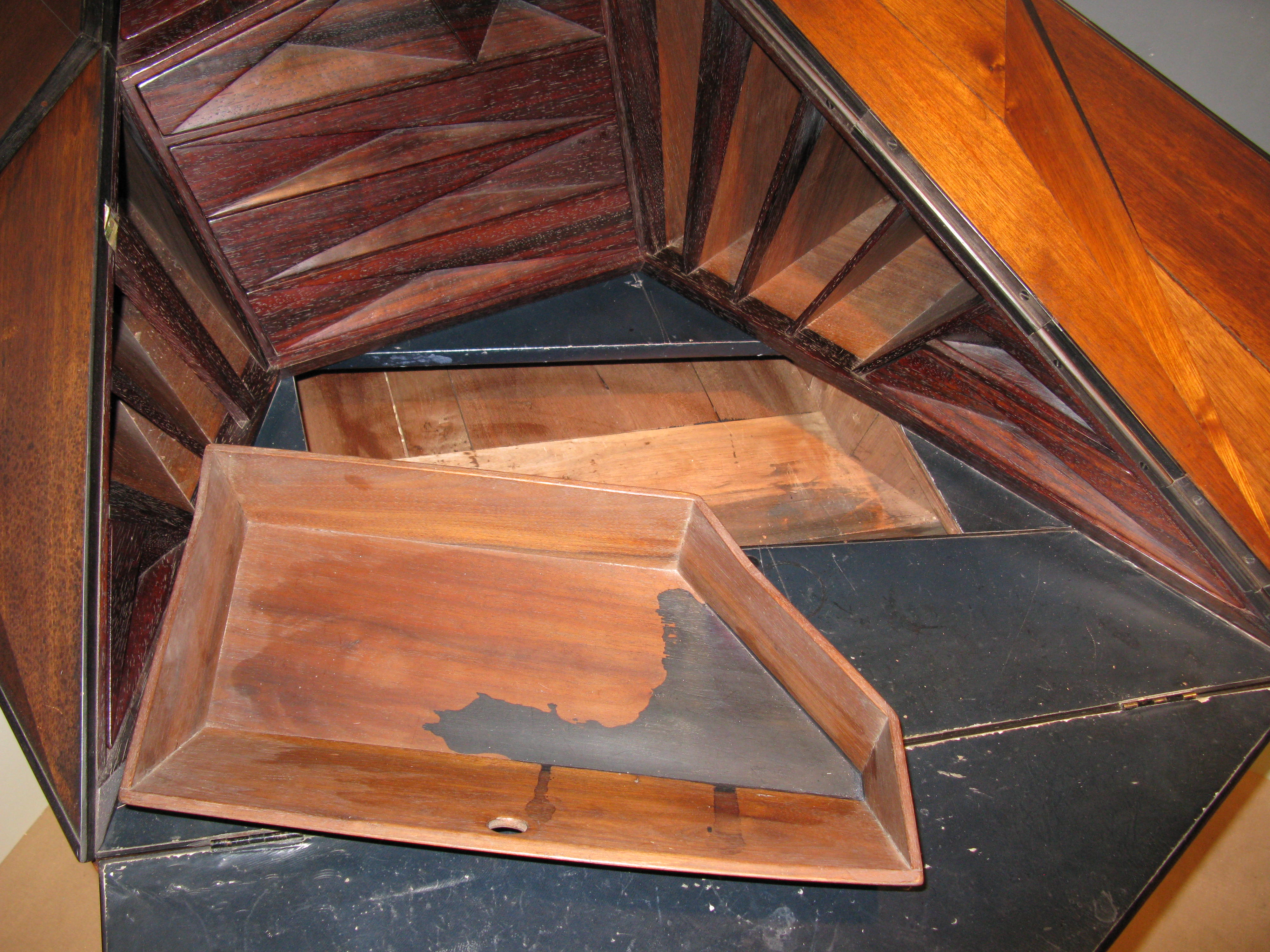The Fischer Corner desk has made a triumphant return to the place of its creation and is on view for all to see until June 24th. This desk is truly a masterpiece. Its cubist forms and expressionist angles create a truly unique piece of furniture considered by many to be the most influential piece of the 20th century. When the desk is closed, it appears as a crystalline sculpture whose unique angles send the eye from one corner to the next and back again. The triangular panels are made of three smaller triangles to create an illusion of depth on the flat surface. When the desk opens, it reveals cubbyholes and angular drawers – plenty of space to store documents, pens, books and the like. A false panel in the desk top even slides back to reveal not one, but two secret compartments.
The license for such creativity was given by a woman who would become one of Esherick’s greatest patrons: Helene Koerting Fischer who commissioned the desk in 1930. Helene, or “Ma Fischer” as Wharton called her, first encountered Esherick at Hedgerow Theatre where she purchased “Finale,” his sculpture of a reclining dancer. She commissioned a Victrola cabinet that would also act as a
pedestal for her new sculpture. The cabinet was chest-high and held a phonograph and record changer, a loudspeaker and vertical drawers, each containing a dozen phonograph records.[1] With the purchase of “Finale” and the Victrola cabinet, a new friendship was born.
Helene Koerting Fischer was not the average 1930’s woman. She owned the Schutte-Koerting Company, an engineering firm and factory in Philadelphia that specialized in the production of precision gear assemblies.[2] She and her husband owned a large house in the Chestnut Hill section of the city and set out to fill it with Esherick originals. Helene greatly enjoyed expressionist-style art and furniture and Wharton was happy to provide; she would describe what furniture was needed, he would mock her up a model and they would discuss it until the design was perfect. Wharton wrote to his good friend Theodore Dreiser: “I have a lot of very important, no not so important, but, orders with freedom. This new enthusiast certainly has faith in me.”
Wharton rose to the challenge. The freedom was exciting and sent him on a creative journey to explore his ideas about form and function and provided him a chance to prove that furniture could be both artistic and functional. In their first major project, Wharton filled Helene’s guestroom with “a daybed, an expressionist-style end table that featured a recessed lap light, and a prismatic sink…”.[3] Upon the completion of her guestroom, Ma Fischer commissioned a small writing desk that would fit into the corner of her dressing/sitting room, and Wharton created the desk we now have on display.

Handwritten Invitation, 1931. Theodore Dreiser Papers, Rare Book and Manuscript Library, University of Pennsylvania.
Its first showing created a sensation. Over the weekend of March 7-8, 1931, Esherick hosted an open house, inviting neighbors, friends and locals to come view the desk. He wrote to Dreiser of the occasion: “…people like ants swarmed the studio, spilled the butter, but really I think were thrilled, if not pleased.” The patronage of Helene Koerting-Fischer played a major role in Wharton’s career. Without the artistic freedom she allotted him, his creativity may not have had the opportunity to flow so openly and freely as it did with the Corner Desk. Wharton’s experiments with expressionism reached its pinnacle in this piece and proved that furniture can be both functional and sculptural; that it is possible to live and interact with art on a daily basis. It gave Wharton the confidence to charge forward. In 1933 Esherick wrote to Dreiser: “…artistically and creatively I fear nothing!”
The desk will be on display until June 24 in the Visitors Center where you can also view Wharton’s letter to Dreiser about the desk and Louise Campbell’s description of the desk written after the March 1931 showing. The desk is included with your admission to tour the studio. Tours of the studio are by reservation only and can be arranged by calling the museum at 610-644-5822. Tours are conducted Saturdays 10-4, Sundays 1-4 and group tours of 5 people or more can be arranged for weekdays March 1-December 31. Please call or email [email protected] for more information.







